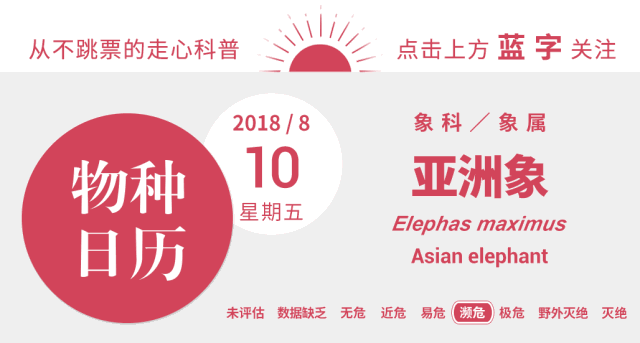The Elephant War: from the Age of Cold weapons to the 21st Century

In our impression, elephants seem to represent kindness and honesty, especially the smaller Asian elephant (Elephas maximus), which is famous for its high IQ and meekness. But history has played a joke on us: the war elephant that has made Alexander the Great, who has always been valiant, is precisely the Asian elephant.
An Asian elephant that looks docile. Picture: Scott Camazine / gettyimages.com
A behemoth on the battlefield
Accounts of the Macedonian conquest of the East always refer to the most unusual night in 331 BC: on the eve of the final battle with the Persian Empire, Alexander, the self-proclaimed king of the world, showed slight trepidation. Pre-war investigation found that the enemy was not only numerous and well-equipped, but also sitting on favorable terrain. However, Alexander the Great did not seem to care much about this, except that 15 heavily armed elephants appeared in front of the Persian array.
A painting showing Persian war elephants at the Battle of Gaugamilla. However, modern historians generally believe that the Persian war elephant at that time may not have time to put into actual combat. Picture: Charles Le Brun / wikipedia
The seemingly docile Asian elephant may be used as a war elephant because it is easier to tame than the two more powerful African elephants. In the ancient Indian epic, there are many records of war elephants. Some people even think that the Persians learned the tactics of war elephants from India.
Many civilizations have exerted the power of elephants to the extreme. In addition to using them to attack the enemy, some war elephants have sharp blades on their tusks, which can be described as unstoppable. Picture: Jeri Garbaccio / metmuseum.org
It is not difficult to imagine how much impact and shock an elephant charging at full speed can produce to the enemy in an era of relying on cold weapons and formation. Although Persian battle elephants were captured before they could be put into actual combat in the famous Battle of Gaugamilla, Alexander was acutely aware of their importance and devoted them to the expedition a few years later. However, these war elephants did not give the Macedonians any advantage, because the Macedonians' next opponent happened to be the first civilization to put elephants into war: India.
In the middle of the 18th century, the war broke out between Britain and France in order to fight for the interests of South India, and war elephants still participated in it. Picture: Paul Philippoteaux/ wikipedia
Elephants in ancient China
In fact, India is by no means the first to discover the war potential of Asian elephants. In the far East, the Chinese who are good at military cutting also set their sights on this beast-in the early days of King Cheng of Zhou, the remnants of the Shang Dynasty rebelled and "merchants obeyed the elephant and mistreated Dongyi", which brought no small trouble to Zhou Gongdan, who went to counter the rebellion. During the Spring and Autumn period in China, the State of Wu defeated Chu, and the Chu army also set up a "fire array" to defend the enemy.
But the paradoxical thing is that, as the "internal test players" of war elephants, India and the subsequent Mediterranean civilization and Indochina civilization have always used the war use of elephants to modern times, while Chinese war elephants have gradually disappeared. so that we can only figure out the heroic posture of the group elephants on the chessboard of the Chu-he-Han boundary. What happened to the Chinese elephant?
In fact, the answer is simple and straightforward: for Chinese civilization, our relationship with the elephant is too shallow. When the civilization gradually develops, the elephant has drifted away.
The Book of songs mentions "four wings, like a fish suit," which refers to a bow decorated with ivory at both ends. Picture: Hosoki / "illustrations of the names of the Book of songs"
During the Xia and Shang dynasties, elephants were still a common species in the Yellow River valley. In the oracle bone inscriptions unearthed in Yin ruins, the hunting scene of the king of Shang was often recorded-- "Xinhai." Get the elephant ten "," Yihai. Get the elephant seven "," Xin Mao. Elephant two. In fact, site excavations in Xia, Shang and earlier showed that there was a warm and humid period in the Yellow River basin for a long time, when there were large tracts of native bamboo forests in North China. Wild buffalo, rhinoceros and Asian elephants can survive the winter here, so merchants have enough wild elephant resources to tame, and it is normal for military use.
What is more worth mentioning is that the utilization of object resources in the Shang Dynasty is not limited to servitude. At that time, there was already a saying that "the beauty of the flesh, the lip of the orangutan," Lu Buwei interpreted that "Yue" refers to the elephant trunk. This shows that our nature of tasting everything is probably to be carried forward by the ancestors of the Shang Dynasty.
People who advance, elephants that are fading.
It is inevitable that in the Shang Dynasty, the climate of the Central Plains has begun to change, and the winter temperature in the Yellow River basin is no longer enough to support the survival of cold-fearing creatures such as elephants and rhinos. During the warring States period, Han Feizi wrote that "people want to see elephants", indicating that wild elephants may not have completely disappeared in the Central Plains at that time, but they are already very rare. The development of population and agriculture has also led to the reclamation of a large number of habitats and the gradual retreat of Chinese elephants to the Huaihe River.
Which of the two factors, human activity or climate change, has a greater impact on the distribution of elephants in China? It must be admitted that climate change is an important long-term cause, but its impact does not seem to be as rapid as the former.
A typical example is that during the Northern and Southern dynasties, due to the decline of population and agricultural decline caused by successive wars, the area of secondary forests in the Central Plains re-expanded, and the population of Asian elephants in the Huaihe River Basin not only stopped declining, but even spread northward. At that time, it was recorded that "in the first year of Chengsheng (552 AD), December." There are hundreds of wild elephants in Huainan, and there are hundreds of wild elephants in the middle of winter. It can be seen that the environment at that time can still support the survival of the elephants, but this sentence also reflects the fierce conflict between people and elephants at that time.
China is rich in forest resources in ancient times. Photo: fan Baomin / Journal of Beijing Forestry University (2001)
In the prosperous Tang Dynasty, the civilization of the Central Plains once again ushered in a period of stable growth, and active agricultural activities once again compressed the habitat of wild elephants. In the second year of Zhenyuan (786 AD), the rebellious Li Xilie captured a wild elephant in Tangzhou. As wild elephants were rarely seen north of the Yangtze River, Li Xilie was overjoyed and thought it was auspicious-in April of the same year, he was poisoned to death by his subordinates.
However, in the Tang Dynasty, both the folk and the royal family were no stranger to elephants: the open and inclusive Datang attracted tribute from many small neighboring countries, and there was no shortage of tamed elephants in the tribute of the southern countries. Perhaps the most fond of paying tribute to elephants is Lin Yiguo in central Vietnam today. Records show that Lin Yiguo sent a total of 33 Tang envoys, of which 12 came with elephants, with more than 20 at the most.
In theory, there were wild elephants in the south of the Tang Dynasty, so they should not like these tributes. In fact, the tribute elephant of Linyi State was not only obedient, but also could dance well, which was deeply loved by the rulers of the Tang Dynasty.
Tang Dynasty Puxian Bodhisattva riding a statue of a white elephant (left). Photo: Handan Museum
Lin Yi-kuo has a long history of taming elephants, but to them, elephants are not just toys. In Taiwan, "there is no punishment, but those who are guilty put the elephants down." militarily, they have a huge elephant team. In the war with the Southern dynasties Liu Song and Sui dynasties, they all used war elephants on a large scale. So will the Tang Dynasty introduce war elephants again because of this? A side evidence seems to answer this question: in the eighth year of Emperor Xuanzong, the State of Southern Tianzhu asked Datang to support war elephants and soldiers to fight against Dashi and Tubo. It is conceivable that the war elephants of the Tang Dynasty should be on a very large scale, otherwise how could they support the Gentiles?
Elephant punishment is a means of punishment implemented for a long time in South and Southeast Asia. In the Tang Dynasty's description of the Indo-China Peninsula, it was accurately recorded that they "practiced it with images" to the prisoners. Picture: MilkyWei / wikipedia
In the early years of the Northern Song Dynasty, the climate warmed up briefly, shrinking to the wild elephants in the Yangtze River basin, and occasionally reappeared near the Huaihe River or even further north. Unfortunately, this is only a brief flashback. After the Jingkang Rebellion, in order to avoid the flames of war, a large number of people in the Central Plains moved southward, and the proportion of population between the north and the south of China reversed for the first time. As the population moved southward, the wild elephant habitat gradually disappeared and fragmented, and the domestic wild elephant rapidly shrunk to Fujian, Liangguang and Yungui areas.
The pattern of one man's advance and retreat lasted until the Ming and Qing dynasties, and in modern times, Chinese elephants only appeared sporadically in southern Yunnan. Modern research shows that the existing Asian elephants in Yunnan are not the same subspecies as the Asian elephants once distributed in the Central Plains, and this distribution was temporarily named as the subspecies of Chinese elephants in the Central Plains and became completely extinct in the Ming and Qing dynasties at the latest.
The distribution area of Asian elephants. Light red is the historical distribution area, crimson is the present distribution area. Picture: s é mhur / wikimedia
Can you keep my ivory?
However, contrary to the declining trend of wild Asian elephants in China, the demand for Chinese object products has been heating up.
Whether in the East or the West, the use of ivory has a long history. According to records, we Chinese have used ivory for perhaps 7000 years, and ivory craftsmen and ivory materials have occupied an important position in the "hundred workers and eight talents" of the Zhou Dynasty. After the introduction of Buddhism, the elephant's connection with the Buddha and many Bodhisattvas made it a sacred and noble symbol, which led to the peak of Chinese people's respect for ivory products: wealthy families used ivory carved and polished household items (chopsticks, seals), important courtiers used ivory Wat boards, and ivory carving handicrafts and religious articles were regarded as treasures.
Exquisite tooth carving handicrafts. Picture: disappearingelephants.com
After the gradual depletion of wild elephant resources, a large amount of ivory has been imported to meet the demand since the Song Dynasty. At the same time, countries in South Asia, Southeast Asia and Japan, which are deeply influenced by Buddhist culture, are also hungry for ivory resources.
However, due to the long growth and reproduction cycle of elephants, the natural growth rate is very slow, elephants have never been artificially domesticated, and due to the loss of habitat caused by human activities, the population of Asian elephants is shrinking rapidly. By 1973, its population had declined to a dangerous level, and as one of the first endangered species of wild animals, it was listed in Appendix 1 of the Convention on International Trade in Endangered species of Wild Fauna and Flora (CITES), which stipulated a total ban on international trade in Asian elephant products, including ivory, since 1973. But in this way, strong market demand has transferred the source of ivory to African elephants that have not yet been included in the appendix. As a result, the populations of the two African elephants also declined rapidly and were soon listed in Appendix 1 of the CITES.
Let's leave the ivory on the elephant. Picture: caa-auction.com
Of course, such a ban is unrestrained for illegal poachers, and only by starting from the source of demand can we effectively curb the damage caused by the ivory trade. In 2015, China and the United States jointly announced that the two countries would suspend the import of ivory. This is a positive sign. China was once the largest legal ivory consumption market and the largest illegal ivory consumption market in the world, while the United States was the second largest illegal ivory consumption market. The two countries announced a total ban on the ivory consumption market. It plays a great role in curbing illegal poaching and ivory smuggling. Unfortunately, only one year after this consensus came into effect, the United States restarted the import of ivory.
China's ban on ivory imports has had some effect, but the domestic legal ivory trade is still going on, and there are a large number of illegal ivory mixed in. Subsequently, China announced a total ban on any ivory trade on December 31, 2017, a move that was praised by all parties.
Countries such as Thailand, which have relatively large resources of wild Asian elephants, can still easily buy ivory products because domestic trade is almost unregulated by CITES. In addition, many countries continue to capture baby elephants from the wild and tame them, using sticks, hooks and hunger to bring them to their knees for performance or enslavement.
Behind the elephant performance is the cruel torture of the elephant. Picture: zghjmx.com
These oppressed elephants sometimes hurt people. You may remember that in December last year, a Chinese tour group was killed and injured after riding an elephant in Thailand.
For the sake of the elephant, but also for ourselves, please refuse the elephant performance.
In addition to riding an elephant and watching an elephant show, there are other ways to learn about elephants. Picture: world Society for the Protection of Animals
Human-elephant conflicts have been recorded in China's ancient books, and today, when the habitat of Asian elephants is extremely compressed, it has become a common norm-- in the existing distribution areas of Asian elephants, including Xishuangbanna, China. There are often tragedies in which elephants destroy farmland and houses and are retaliated by farmers.
The mother and son fled the scene after a group of people threw burning tar balls at a pair of Asian elephants in the Indian state of West Bengal. Picture: Biplab Hazra / The Nature InFocus Photography Awards 2017
Looking at the picture above quietly, I can't help but ponder painfully: in the long journey between Asian elephants and human beings, they either act as formidable war machines or become symbols of the Buddha, but no matter what kind of image, should not end up in the present embarrassing situation?
Asian elephants walk on a road in a protected area in Thailand. Picture: Khunkay / wikipedia
The glorious story of the Asian elephant has passed, and no matter how annoyed we may be, we may not be able to reverse this fact. But the story still needs to be told-telling history may no longer be important to history itself, but it is crucial to the future.
This is the 22nd article in the fourth year of the species calendar, from the author of the species calendar @ a man wandering.
The calendar mother has something to say.
- Prev

These two kinds of net water watering flowers is like watering paraquat and watering a dead pot. Don't ignore it.
Growing flowers is a very deep thing. Most people love beauty and will decorate their homes. Plants are living decorations, but many people find that they don't want to feed them until they buy them home.
- Next

The love and killing in nature is about figs and fig wasps.
Speaking of Ficus plants, northerners may think of fig trees with slender branches and strangely shaped leaves, while southerners may think of giant banyan trees with thick shady ground and fluttering air roots. Big or small, their fruits.
Related
- Wuhan Hospital Iron Tree Blooming Result Was Instantly Frightened by the Gardener Master
- Which variety of camellia is the most fragrant and best? Which one do you like best?
- What is the small blue coat, the breeding methods and matters needing attention of the succulent plant
- Dormancy time and maintenance management of succulent plants during dormancy
- Minas succulent how to raise, Minas succulent plant pictures
- What are the varieties of winter succulent plants
- How to raise succulent plants in twelve rolls? let's take a look at some experience of breeding twelve rolls.
- Attention should be paid to water control for succulent plants during dormant period (winter and summer)
- Watering experience of twelve rolls of succulent plants
- Techniques for fertilizing succulent plants. An article will let you know how to fertilize succulent plants.

